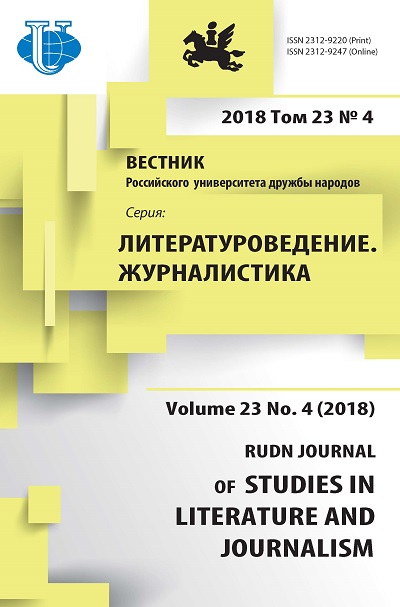Political media memes as simulacra in media
- Authors: Kuznetsov I.S.1, Slavina V.A.1
-
Affiliations:
- Moscow State Pedagogical University
- Issue: Vol 23, No 4 (2018)
- Pages: 422-427
- Section: JOURNALISM
- URL: https://journals.rudn.ru/literary-criticism/article/view/20450
- DOI: https://doi.org/10.22363/2312-9220-2018-23-4-422-427
Cite item
















